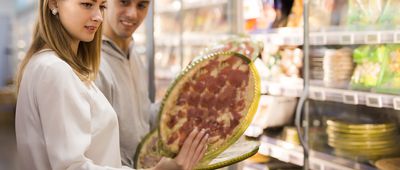Fuzzy foods
We’ve all been there— you buy a pack of strawberries, raspberries, or blackberries, and within the next 24 hours you open the container only to find there are a couple berries with fuzzy mold growing on them. Now what? Do you throw the whole package away and effectively toss seven dollars down the drain, or do you pick amongst them for the good ones? What about that loaf of fresh bread, or the old jar of jam? It’s confusing to know for sure what needs to go and what is still safely edible.
To begin with, it’s worth understanding how mold works. It’s not always just furry gray or green dots or white spots. Mold can reach deep down into the food via root threads, invading your snack with invisible bacteria or toxins, according to the USDA.
As if you’re not horrified enough already, some molds may cause allergic reactions and others can be toxic. So, back to those berries— are they safe? Read on to find out which foods with a little mold are fine, and when it’s time for those groceries to hit the garbage.
Related: Moldy Baked Goods From Costco Infuriate Shoppers — But Redditors Say This Trick Keeps Them Fresh



















